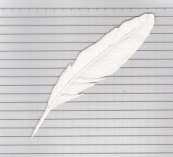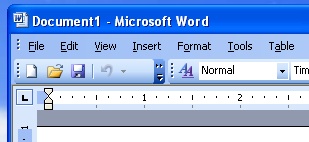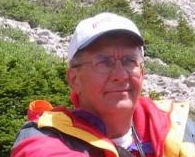 |
|
||||||||||||||
| Links to Notebook Pages: | Mathematics |
Literature |
Model Trains |
Thursday August 3, 2006 5:15 am Lethbridge Alberta Sunrise 6:04 Sunset 9:11 Hours of daylight: 15:07
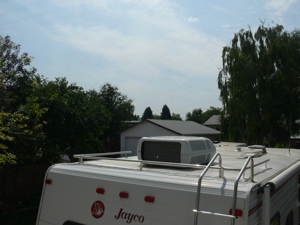 |
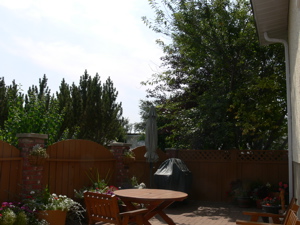 |
From rear window |
South patio |
Both images taken at 3:00 PM |
|
A. Morning Musings
5:15 am It is + 9 C at the moment, with a forecast high of + 24 C. It is clear at the moment but some cloud and a 30% chance of showers is forecast for the afternoon.
I noticed a very bright 'star' low in the east this morning. I wonder if that is Mars, as I recently heard that it will be close to earth in August.
This morning is a new experience. I have no chores on my agenda for the day. I will mow the lawn but that doesn't count as an activity. I have a cuppa beside me, so it is a good setting for thinking about what I would like to do with both today and the coming days. This is more like what I envisaged retirement to be - self-directed learning.
My primary 'real' activity will be model trains. That is a hobby with many facets: electricity and wiring, mechanical operation of locomotives and rolling stock, building of plastic building and structures, building of scenery, and finally prototypical operation of actual trains. This should also get me reading more about the early history of trains in Canada.
Modeling has always been an important part of my life. I made numerous plastic models when I was a boy. My Ph. D. thesis was on using computer models in a school setting (not bad for the 1960's), and I have made computer models an important part of my interest in computer applications in education. Logo might be viewed as a vehicle for generating mathematical models. STELLA is another software program that I have used for creating models of population dynamics as well as for mathematical systems. I have in front of my a gorgeous book, "The Computational Beauty of Nature by Gary Flake (1998). I have started this book a couple of times but something has always come up that has forced me to put it on the back burner. Maybe this time it will be different. It certainly feels good to raise Mathematics back to an Immediate activity.
B. Plan
Immediate Health Walk & exercise 1 hr Mathematics Read "The Computational Beauty of Nature" Chap 3 1 hr Model Trains Wire lower mainline track for a power block 1 hr Assemble wooden trestle kit 1 hr Literature Begin reading "A Hundred and One Days: A Baghdad Journal" 2 hr Later Chores Investigate water softeners for home 1 hr Technology Read manual for cell phone 1 hr add keywords to iPhoto records Make notes for chap. 4 of "Switching to the Mac" 2 hr Begin reading "iPhoto" 1 hr digital photography - learn about using the various manual settings Mathematics Larson "Calculus" Gardner "The Colossal Book of Short Puzzles" History Continue reading "Citizens" Watson "Ideas" Model Trains Add blue backdrop to layout 2 hr Assemble second oil platform kit
C. Actual/Notes
6:00 am My previous attempt to begin Gary Flake's book, "The Computational Beauty of Nature" was on June 22. I have reread these and am now about to begin reading chapter 3 Computability and Incomputability. [pp. 23 - 49]
- "Computer Science is no more about computers than astronomy is about telescopes. - E. W. Dijkstra" [p. 23]
- "If we could not reduce what happens inside of computers into some mathematical formalism, there would be no way of proving or disproving the properties that computers have." [p. 24]
- "... it is possible (and also theoretically useful) to convert a program, input string, or output string into a single natural number." [p. 24]
This is a great sentence. It it crystal clear and yet mind-boggling at the same time.
- "A Godelization is a method for mapping many natural numbers into a single natural number." [p. 25]
This is a new term for me, and also a new idea. I am not sure what to do with it yet, but I sense that it is a very powerful idea as it appears to be an ultimate form of condensation.
- "... we will sometimes refer to the computation as manipulating strings, numbers, or even bits. It really doesn't matter. What does matter is that the representation of a computer's input and output can always be converted from one form to another. We will simply use whatever form is most convenient at the time." [p. 26]
- "Another conclusion that can be reached from the ideas in this section is that there are as many programs as there are natural numbers." [p. 26]
I love the way Flake extends the ideas in a very natural way to conclusions that are staggering in their novelty.
Whoa! Time to slow down. One strategy that I have when trying to Learn new material is to ask myself, 'what are the essential ideas of this section?' and 'Do I really understand this?'
What are the essential ideas of this section?
- It is possible to Godelize any number (or sequence of numbers, and hence any list). How does one do this?
- Pick any natural number x. This number has a unique prime factorization
Whoa again! I want to continue making my notes using mathematical notation that exceeds the capabilities of Dreamweaver. In a Windows environment I have used a program called MathType that allowed me to use Word to easily create such mathematical expressions and then copy them as a gif file into Dreamweaver. A quick google search shows that there is a version of MathType for the Mac, but it costs about $150. I wonder if I can use Parallels software on the Mac to switch to Windows and then copy the expression and switch back to OS X and paste it into this page.
Whoa, whoa again. I seem to have a problem booting up Parallels. I suspect that it is related to something I did a couple of weeks ago when I changed some form of Home setting. I will contact the uni later this morning and see if they have any suggestions.
Okay, a quick phone call solved the problem of Parallels. The next test was to see if it would allow a copy&paste across operating systems. The answer to this appears to be no. I tried it copying selected text as well as an image, but in both cases when I switched to OS X there was nothing to paste. It looks like I will need to order MathType for the Mac.
Success! The trick is to form the appropriate expression using MathType in Windows, then use Parallels to switch back to OS X, then use Grab to select the area of the Windows display that I want , save this as a TIFF to the desktop, then select it and save it as a JPEG file. Finally select the image in the Dreamweaver website and it will ask if I want it saved in the website and then display it as with any image. Simple when you know how.
The above is a sample screen capture from a windows display.

What started out as a Mathematics activity quickly became a Technology activity. But a satisfying one as I am now becoming comfortable with both Parallels and MathType in Windows. Actually this is quite cool.
5:30 PM I cut some wooden strips that could form the berms around my two oil tanks. I cut them to a scale that fit a walkway that is supposed to go over them but when I put them on the layout they overwhelmed the space available. I am now debating trying a smaller and thinner size for the berms as well as giving serious thought to simply not having them. This is one of the features of any modeling activity (including computer models), namely what to include and what to exclude.
I finally have gotten around to beginning to wire the Lower Mainline loop. I attached a 4-position dual row barrier strip to the table frame near the terminal track close to where the control panel will be located. I used 14 gauge red and black wire to connect the barrier strip to the power source, then used 20 gauge red and black wire to connect the barrier strip to the terminal track. At that point, in principle, I should have a working Lower Mainline loop.
Success. I had no difficulty running my locomotive and 3 cars around the loop. The next step will be to run 14 gauge red and black wire from the barrier strip to another about a quarter of the way around the loop which will also have a connection to a section of terminal track. I am planning to have a total of 4 such connections around the loop. This is a small step, but it is the first step in what will eventually be a fairly sophisticated DCC wired layout. At least now I know that my basic understanding of barrier strips and layout wiring is sound. It is a good feeling.
I have also decided to keep my turnout controls above the table. This is much simpler than trying to remount them under the table. My priority is to have a working layout. Once that is accomplished, hopefully by Christmas, then I will think about making small changes as I see fit.
9:00 PM I have just finished reading "A Hundred and One Days". It is an easy read, and one that succeeds in giving a good sense of what it was like to be in Baghdad during the recent war. I now feel that I would like a change of pace and read something Canadian. I have selected a "true story of survival in the Arctic" called "Ada Blackjack. I will begin that tomorrow.
D. Reflection
